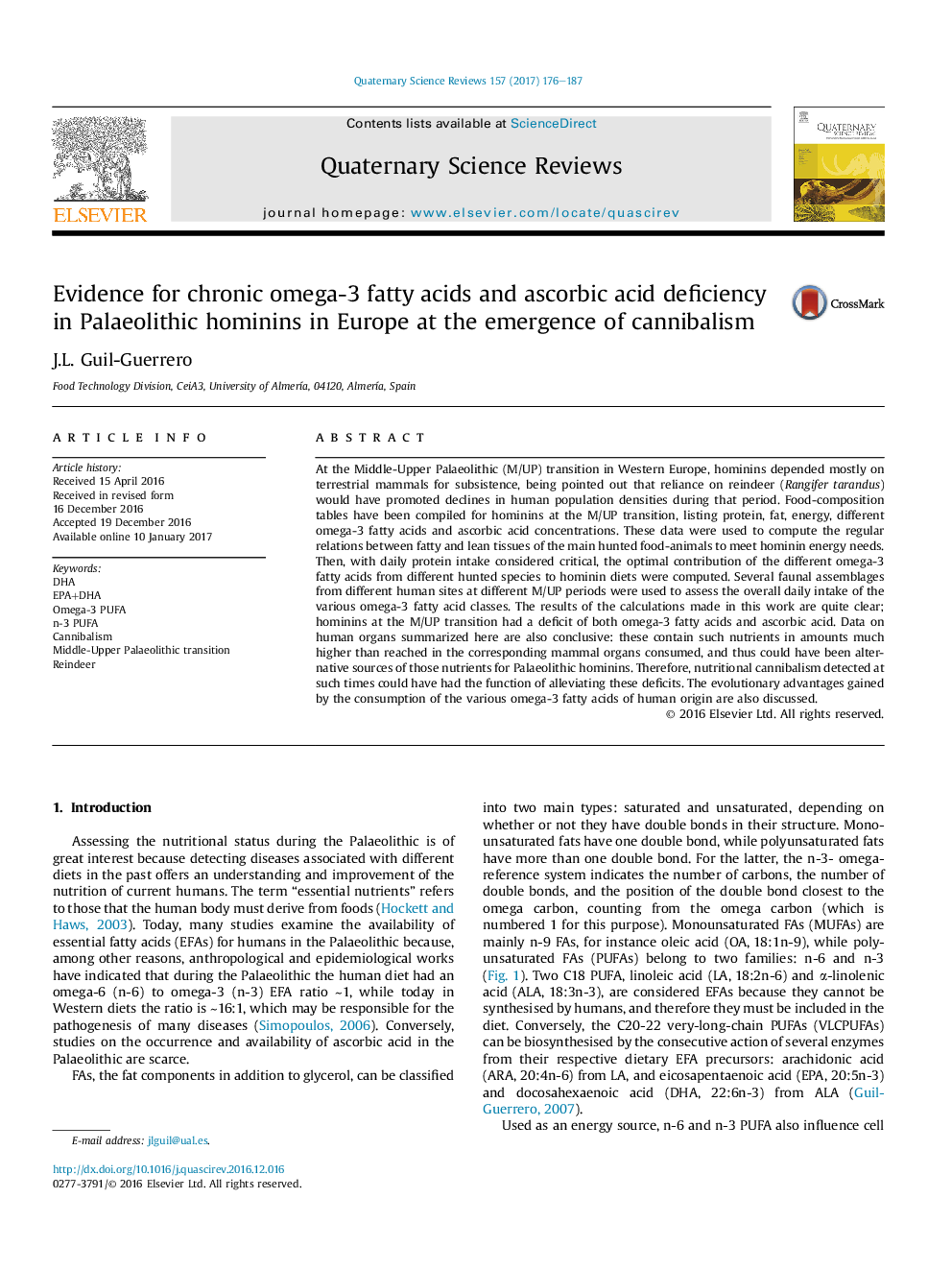| Article ID | Journal | Published Year | Pages | File Type |
|---|---|---|---|---|
| 5786864 | Quaternary Science Reviews | 2017 | 12 Pages |
Abstract
At the Middle-Upper Palaeolithic (M/UP) transition in Western Europe, hominins depended mostly on terrestrial mammals for subsistence, being pointed out that reliance on reindeer (Rangifer tarandus) would have promoted declines in human population densities during that period. Food-composition tables have been compiled for hominins at the M/UP transition, listing protein, fat, energy, different omega-3 fatty acids and ascorbic acid concentrations. These data were used to compute the regular relations between fatty and lean tissues of the main hunted food-animals to meet hominin energy needs. Then, with daily protein intake considered critical, the optimal contribution of the different omega-3 fatty acids from different hunted species to hominin diets were computed. Several faunal assemblages from different human sites at different M/UP periods were used to assess the overall daily intake of the various omega-3 fatty acid classes. The results of the calculations made in this work are quite clear; hominins at the M/UP transition had a deficit of both omega-3 fatty acids and ascorbic acid. Data on human organs summarized here are also conclusive: these contain such nutrients in amounts much higher than reached in the corresponding mammal organs consumed, and thus could have been alternative sources of those nutrients for Palaeolithic hominins. Therefore, nutritional cannibalism detected at such times could have had the function of alleviating these deficits. The evolutionary advantages gained by the consumption of the various omega-3 fatty acids of human origin are also discussed.
Related Topics
Physical Sciences and Engineering
Earth and Planetary Sciences
Geology
Authors
J.L. Guil-Guerrero,
